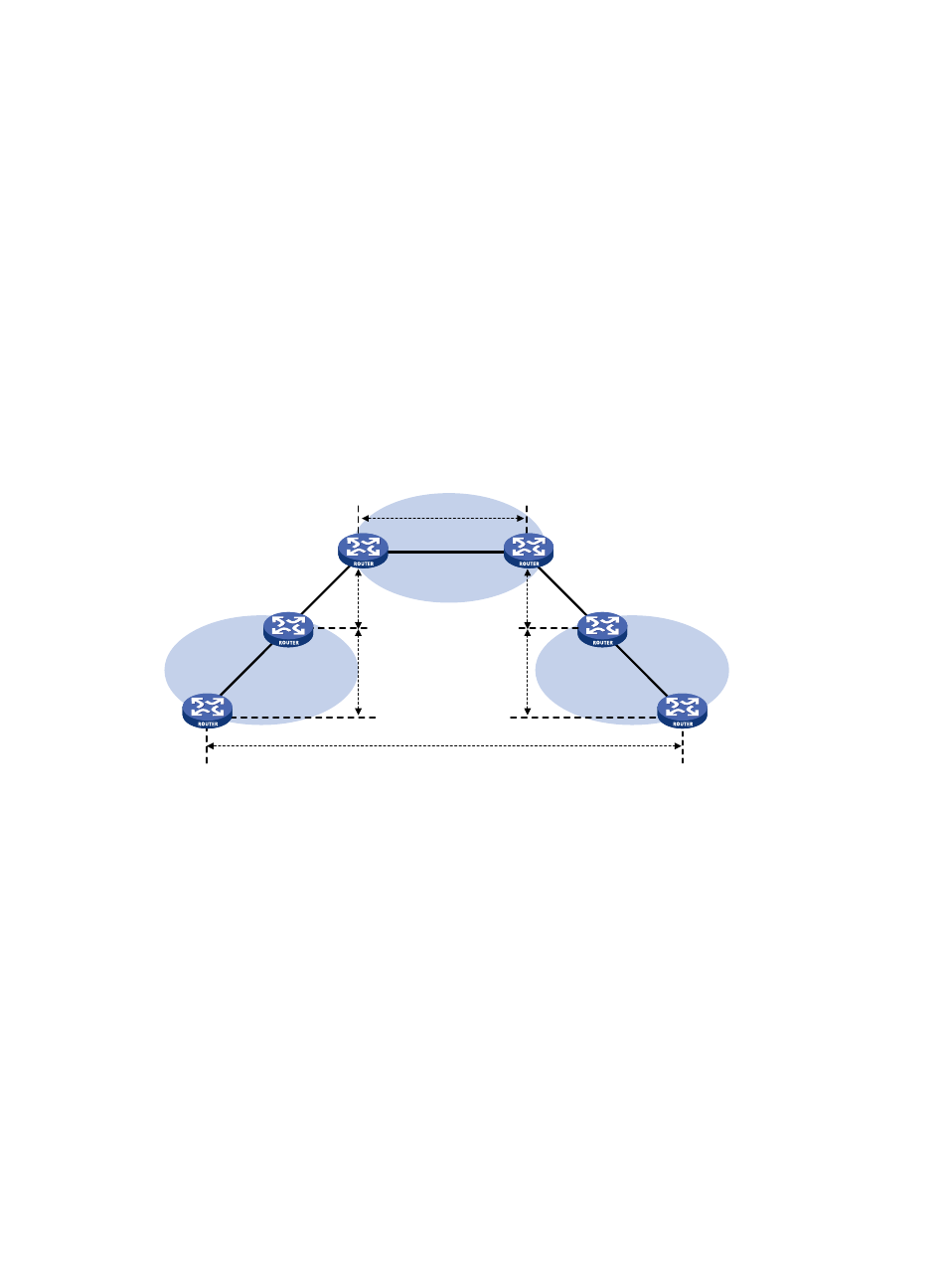H3C Technologies H3C S12500-X Series Switches User Manual
Page 121

110
session established between the routers of the Level 2 carrier. This can greatly reduce the number of
routes maintained by the Level 1 carrier network.
Compared with the common MPLS L3VPN, the carrier's carrier is different because of the way in which
a CE of a Level 1 carrier (a Level 2 carrier) accesses a PE of the Level 1 carrier:
•
If the PE and the CE are in a same AS, you must configure IGP and LDP between them.
•
If the PE and the CE are not in the same AS, you must configure MP-EBGP to assign labels to routes
exchanged between them.
In either case, you must enable MPLS on the CE of the Level 1 carrier. Moreover, the CE holds the VPN
routes of the Level 2 carrier, but it does not advertise the routes to the PE of the Level 1 carrier. It only
exchanges the routes with other PEs of the Level 2 carrier.
A Level 2 carrier can be an ordinary ISP or an MPLS L3VPN service provider.
When the Level 2 carrier is an ordinary ISP, its PEs run IGP to communicate with the CEs, rather than
MPLS. As shown in
, PE 3 and PE 4 exchange VPN routes of the Level 2 carrier through an IBGP
session.
Figure 39 Scenario where the Level 2 carrier is an ISP
When the Level 2 carrier is an MPLS L3VPN service provider, its PEs must run IGP and LDP to
communicate with CEs. As shown in
, PE 3 and PE 4 exchange VPN routes of the Level 2 carrier
through an MP-IBGP session.
Level 1 carrier
MP-IBGP
PE 1
PE 2
CE 2
CE 1
PE 3
PE 4
Level 2 carrier
Level 2 carrier
IBGP
IGP
IGP
IGP/LDP/Labeled BGP